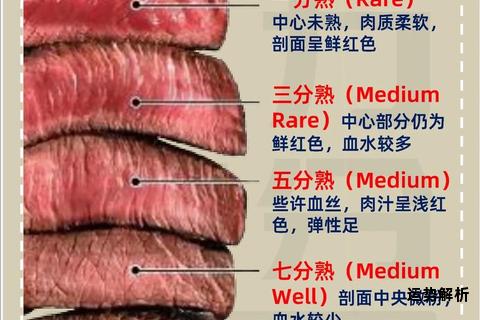Understanding the Language of Steak: A Comprehensive Guide to Terminology and Cultural Nuances
Steak, a culinary staple across cultures, carries a rich lexicon in English that transcends mere vocabulary. Mastering these terms requires not only memorization but also an understanding of cultural contexts and gastronomic principles. This guide explores the intricate language of steak through six critical dimensions.
1. Cuts of Steak: Anatomy of Flavor Profiles

The nomenclature of steak cuts reveals geographical influences and textural characteristics. Key terms include:
Understanding USDA grading terms (Prime, Choice, Select) enhances comprehension of quality indicators. Prime-grade steaks feature abundant marbling, while Select grades indicate leaner options.
2. Cooking Techniques: Verbs That Shape Texture
Culinary verbs dictate doneness and surface characteristics:
The distinction between "grilled" (open flame) and "broiled" (oven-top radiant heat) proves essential for recipe comprehension. "Reverse searing" – slow-cooking followed by high-heat finishing – represents modern culinary terminology.
3. Doneness Scale: From Bleu to Well-Done
The precise temperature spectrum requires nuanced interpretation:
Memorize the "hand test" analogy: The fleshy area below the thumb mimics steak firmness at different doneness levels when touching fingers to thumb.
4. Ordering Etiquette: Scripts for Confident Dining
Typical server dialogue includes:
Proper responses should specify doneness, cut preference, and sauce choices ("au poivre", "béarnaise"). Understand modifier terms: "Oscar-style" indicates crabmeat topping, "Diane" signifies pan sauce with shallots.
5. Cultural Pitfalls: Avoiding Lexical Missteps
Common errors stem from:
Note regional spelling variations: "Porterhouse" (US) vs. "T-bone" terminology differences in portion size.
6. Mastery Strategies: Contextual Learning Approaches
Effective learning methods include:
Practice through role-playing exercises: Simulate restaurant scenarios using dialogue frameworks. For advanced learners, study USDA meat inspection documents to comprehend regulatory terminology.
Conclusion: Beyond Vocabulary Acquisition
True mastery of steak terminology requires understanding its intersection with culinary science and dining culture. Implement a three-phase approach: 1) Memorize core terms using visual aids 2) Analyze cooking videos for contextual usage 3) Conduct field practice at steakhouses. Remember, proper terminology usage enhances both culinary experiences and cross-cultural communication. Consider maintaining a tasting journal documenting cut characteristics paired with corresponding English terms to reinforce retention.


